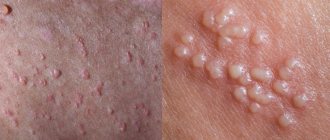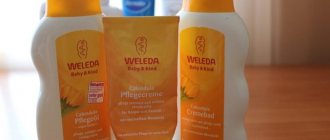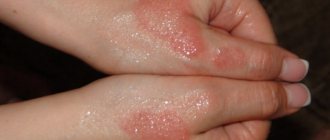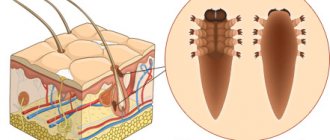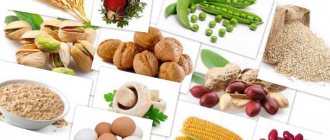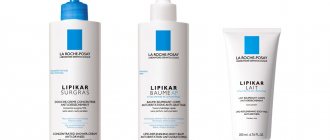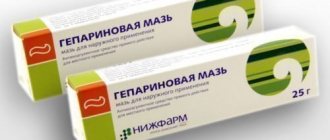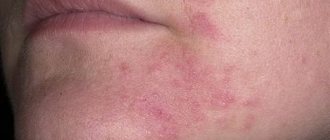Hypoallergenic diet for adults
Atopic dermatitis is manifested by a skin rash, severe itching, burning of the skin, swelling and redness. A hypoallergenic diet is aimed at prolonging remission and eliminating exacerbations. Since the disease is allergic in nature, all potential allergens must be eliminated.
It is recommended to keep a food diary, tracking your reactions to specific foods. The basic requirements of a hypoallergenic diet are as follows:
- It is necessary to exclude highly allergenic products: milk, eggs, sweets, citrus fruits, berries, etc.
- It is important to completely eliminate the consumption of sugar and salt.
- It is necessary to give up bad habits.
- You need to eat fractionally: more often, but in smaller portions.
- You need to drink enough liquid.
- Food should be rich in vitamins, minerals and other beneficial substances.
- Products must be cooked. This is especially true for red fruits and vegetables.
- It is recommended to boil, bake, steam food. Frying is excluded.
General rules
Among inflammatory skin diseases, dermatitis occupies a large share, the most common forms of which are atopic and seborrheic dermatitis . Despite the differences in the etiology and pathogenesis of these forms of dermatitis, the most important element in the treatment of these diseases is a hypoallergenic diet.
Hypoallergenic diet for atopic dermatitis
The main factor in the development of atopic dermatitis (AD) is an inherited predisposition to allergies, which is accompanied by increased production of total immunoglobulin E (IgE), generalized hypersensitivity and a specific reaction of the body to allergens. Hereditary predisposition is realized through a system of various causal factors (triggers) and environmental factors. Atopic dermatitis in the vast majority of cases is caused by food allergens. The most important causal allergens in adults are cow's milk proteins, chicken eggs, fish and seafood, cereals, soy proteins, red-orange vegetables and fruits, and nuts. It is against the background of food allergy, which is a factor of initial sensitization, that the body’s hypersensitivity to other allergens is formed through the mechanism of cross-reactions.
For children, the high antigenic load on the fetus is of great importance during the pathological course of pregnancy , with improper nutrition of the mother during lactation, early introduction of complementary foods or transfer to artificial feeding with the introduction of foods in the diet that are not appropriate for the child’s age, as well as pathology of the gastrointestinal tract and dysbiosis intestines, which causes increased absorption of various antigens .
The diet of a patient with atopic dermatitis is based on the principle of elimination - excluding foods and dishes from the diet:
- containing causally significant and cross allergens;
- having high sensitizing activity;
- including artificial food additives ( antioxidants , dyes, preservatives, flavors);
- promoting the release of histamine (chocolate, coffee, orange juice, cow's milk, wheat bran);
- containing a large amount of biogenic amines (histamine carriers) - tomatoes, strawberries, cocoa, legumes, hazelnuts, tuna, cheeses, smoked meats, spinach, herring fillets.
An elimination diet is selected for each patient individually, taking into account his “personal” food allergens and the list of “potentially allergenic foods,” as well as the stage of the disease.
In the acute period, the basis of the diet consists of foods with weak allergenic activity: lean beef, boiled chicken, pumpkin (light colors), squash, zucchini, offal (liver, kidneys, tongue), turnips, garden greens, green apples, cucumber , fermented milk products, low-fat cottage cheese, oatmeal, rice and pearl barley, plums, gooseberries, white currants, watermelon, olive and sunflower oil, pears, dried fruits, butter. At the same time, individual food allergens (if known) are excluded.
When preparing dishes during this period, you must follow a number of rules:
- the allergic activity of products is significantly reduced by heat treatment, so it is necessary to minimize the consumption of raw vegetables and fruits;
- Before eating, potatoes should be kept in cold water for several hours to reduce the starch content;
- porridge must be cooked in the third water - after boiling, the water must be drained and new water must be poured in, repeat twice;
- When preparing broths, vegetable purees and soups, the first water after boiling should also be drained.
If the allergen product is not known, then to identify it, a rotation diet , the essence of which is to divide the food products into several groups (meat, vegetables, dairy, cereals, fruits). The basic principle of this diet is to include in the daily diet for four days only one product from each group (1 type of meat, 1 type of cereal, 1 type of vegetable/fruit, 1 type of lactic acid products, 1 type of cereal). Repetition of any product is allowed only from the 5th day. This way you monitor reactions to products. If any product in the food set arouses your suspicions, try introducing it into the diet again in another set. If the reaction occurs again, it must be excluded from your diet. For analysis, it is recommended to keep a food diary.
The duration of a strict diet for an adult patient should be about 3 weeks and for children - 10 days. The fact of persistent disappearance of the symptoms of the disease can serve as a guide. Next, the diet is expanded to include foods with average allergenic activity.
First, white bread, boiled pork and lean white fish, fresh onions, green/yellow vegetables and fruits are introduced, and if there is no negative reaction, orange and red fruits/vegetables are introduced, as well as freshly squeezed juices, compotes and fruit purees. Thus, the basic diet of a patient with atopic dermatitis is formed. Products with a high allergic potential (eggs, milk, seafood, fish, citrus fruits, melon, chocolate, fish caviar, tomatoes, honey, nuts, strawberries), but important in terms of micronutrient content and energy significance, can be tried to be introduced gradually, one at a time and starting with small quantities. And, based on the body’s reaction to them, decide the possibility of including them in the basic diet. The following table gives some idea of the allergenic potential of products.
| Allergenic potential of products | Products |
| High degree of allergenic activity | Cow's milk, chicken egg, crustaceans, chocolate, cheese, fish, coffee, nuts, mustard, wheat, strawberries, strawberries, raspberries, beets, grapes, persimmons, melon, cocoa, red caviar, tomatoes, pomegranates, celery, black currants, carrots, pineapples, blackberries, spices, sauces, citrus fruits, honey, mushrooms, canned and pickled foods, smoked meats, carbonated and alcohol-containing drinks. |
| Average degree of allergenic activity | Turkey, pork, rabbit, potatoes, rice, peas, apricots, peaches, cranberries, corn, green peppers, buckwheat, bananas. |
| Weak degree of allergenic activity | Beef (low-fat varieties), lamb, boiled chicken, pumpkin (light colors), turnips, zucchini, squash, fermented milk products, green and yellow apples, gooseberries, plums, white currants, garden herbs, butter, green cucumber, watermelon , offal (liver, tongue, kidneys), almonds, pearl barley, rice, oatmeal, olive pears, and sunflower oil, dried fruits. |
The diet of a patient with atopic dermatitis should limit foods containing easily digestible carbohydrates: confectionery, honey, sugar, jam, sweets. It is recommended to replace sugar completely with xylitol , saccharin , and aspartame . The diet should include foods rich in calcium (fermented milk products, cottage cheese), which have a pronounced antiallergic effect, and limit foods rich in oxalic acid , which interferes with the absorption of calcium. Strong broths, spicy and smoked dishes, sauces and seasonings are excluded. Salt and any salty foods are subject to restrictions.
In case of allergic dermatitis , the trigger for the development of which is not food factors, but direct contact with the allergen (through skin contact with it), it is extremely important to first eliminate the causative factor and the time of its exposure. Contact sensitization of the body occurs in both adults and children, even in the first months of life. The cause is most often chemical ingredients and dyes in plastic products, toys, which cause rashes and redness on the hands and face, and the composition of clothing.
The difficulty in identifying a contact allergen factor lies in the fact that it is very difficult to trace the connection with the triggering action of any chemical reagent, since the aftereffect is often delayed. That is, contact with the allergen has already been eliminated, and clinical manifestations of dermatitis develop after 24-48 hours.
In any case, for atypical allergic contact dermatitis, a general hypoallergenic diet is indicated. The same anti-allergenic nutrition is required for oral dermatitis and treatment of Dühring's dermatitis . However, dietary nutrition for Dühring's dermatitis additionally provides for the complete exclusion from the diet of foods containing gluten (gluten), which is a complex protein found in cereals (wheat, rye, barley). The diet for oral dermatitis, in addition to the general requirements for a hypoallergenic diet, includes the exclusion of hot, hot, spicy foods and foods containing coarse dietary fiber to reduce irritation of the affected part of the skin around the oral cavity.
Seborrheic dermatitis is caused by an increase in the secretion and change in the composition of sebum, accompanied by hyperactivation of the fungal microflora of the genus Malassezia and inflammation of the skin. With seborrheic dermatitis, areas of shiny, greasy, thickened skin and dandruff on the head with areas of erythema on the skin, which are accompanied by mild itching, appear on the face, head, and back. Nutrition for seborrhea should be physiologically complete with a menu limit of white bread, animal fats, refined carbohydrates, salt, hot seasonings and spices, and foods containing a lot of cholesterol . The basis of the diet should be dairy products, low-fat fish, boiled meat, brown bread and foods rich in fiber (porridge, vegetables/fruits).
Rotational feeding
Doctors resort to this system if it is necessary to urgently identify the main allergen and eliminate it from the diet. The menu may include meat and dairy products, cereals, fruits, but selectively.
For example, a product from each group may be on the table once every four days. Usually this time is enough for the allergen to provoke pronounced signs of a reaction.
If there are no negative manifestations, you can try further dishes from these dishes in order to develop the most suitable and safe menu. The diet in this case is quite meager, but it allows you to transfer the disease to the latent stage and minimize the risk of exacerbation.
Nutrition for adults with eczema on the legs and hands
Despite this, people insist with a persistence worthy of better use that their skin condition worsens after they eat certain foods.
Believe me, it is not so easy to answer the question of what caused skin inflammation in a given situation. The connection between the food we eat and a skin rash seems obvious at first glance, but since we are faced with many possible triggers of the disease every day, it is difficult to say what the real cause was.
The same applies to foods that supposedly relieve symptoms. Most of the products and supplements studied by scientists did not show any clear improvement in skin condition.
What to do in this situation? We recommend choosing a balanced meal plan. Although there is no evidence of a link between food and eczema, there is no doubt that consistent consumption of fruits, vegetables, low-fat dairy products and whole grains is generally beneficial for maintaining healthy skin.
Elimination diet
If the substance causing the exacerbation has already been detected, then an elimination diet is used instead of a rotation diet. Depending on the features of the clinical picture, the menu will have a number of restrictions. A two-day fast is possible, after which new dishes are gradually introduced into the body.
The following products are limited:
- mushrooms;
- pasta;
- semolina and wheat porridge (millet and buckwheat are considered safer, so they are usually allowed to be consumed);
- tropical fruits, especially citrus fruits. Persimmon and pineapple are prohibited;
- chewing gum (since the composition may contain unsafe additives).
Causes of the disease
Atopic dermatitis is characterized by the appearance of bloody wounds on the skin, in some cases with purulent contents. In this case, no external influences are produced on the epidermis and the upper layer of the skin. Wounds arise on their own, under the influence of internal processes in the human body. The rate of recovery and treatment depends on the severity of skin damage. Symptoms of atopic dermatitis in adults may vary depending on the individual's reaction to food allergens.
Medicine has the following information about the causes of such skin lesions:
- chronic course of the allergic process;
- severe short-term fear, stress;
- pathologies of metabolism and functioning of the endocrine system;
- pathological failure of sex hormones;
- insufficient production of digestive enzymes by the pancreas;
- gluten and lactose intolerance;
- pathological processes in the immune system;
- heredity (genetic predisposition to the development of allergic reactions on the skin).
Breastfeeding (BF)
During the period of breastfeeding, a young mother should treat nutrition especially responsibly, because it affects not only her, but also the baby.
Potential allergens are excluded from the menu and foods rich in vitamins are added. The diet should contain enough protein and complex carbohydrates, but the amount of fat should be limited.
Most often, allergies are provoked by chicken eggs and proteins contained in cow's milk. It is not necessary to completely abandon them, as they are sources of valuable substances. But these products must be carefully processed. Eggs must be boiled for at least ten minutes, and milk must be boiled or fermented.
Interesting article: Therapeutic diet for facial demodicosis with a table of permitted and prohibited foods
Eggs and milk should not be combined with foods that can increase their allergenic effect. These include onions, garlic, radishes, radishes, fatty meat, mushroom and fish broths, and hot seasonings.
Sugar, cereals, and wheat bread are significantly limited. Salt is also minimized.
The following foods must be excluded from the diet of a nursing mother:
- nuts;
- honey;
- caviar;
- seafood;
- marinades, preservation;
- carbonated and fermented drinks;
- sweets, baked goods;
- fatty broths;
- food containing preservatives and dyes.
Interesting article: Features of the diet for Zhiber rosea
Cabbage, carrots, plums, and corn are allowed in minimal quantities. It is important to monitor the baby’s reaction. If a rash and stool disorders are observed, the products should be completely abandoned.
The diet of a nursing mother is based on the following products:
- cereals (rice, buckwheat, corn, oatmeal, pearl barley);
- fermented milk products: kefir, natural yogurt, low-fat cottage cheese;
- chicken, turkey, beef, lean pork;
- green fruits and vegetables and juices from them. Bananas are allowed in moderation.
It is recommended to stew, boil, bake food. Fried foods should be excluded. Meat cutlets can be steamed. It is recommended to choose second-grade rye or wheat bread. Healthy drinks include teas, compotes, fruit drinks, and rosehip decoction. Herbal drinks can be consumed with a doctor's permission.
What do doctors advise?
When planning a diet during allergies, you need to listen to the opinion of an allergist. Many patients neglect an integrated approach to eliminating the problem, as a result of which taking medications and following a diet becomes pointless.
Not only diet and taking antihistamines and sorbents are a mandatory aspect of medical therapy. At the same time, you need to get rid of the cause of the disease in a particular case: from the main household dust collectors - carpets, upholstered furniture, old magazines and books. And this is not a whim of a specialist, but part of a comprehensive therapeutic approach.
You cannot rely on your own knowledge or the Internet to select medications for yourself to treat an allergic reaction. Any self-medication is not only fraught with the lack of proper results, but also with the development of serious health complications and aggravation of the clinical picture of the disease. It is prohibited to independently take antibacterial and sulfonamide drugs for therapeutic purposes if you know that you are allergic to some of them. If you have a drug allergy, any medication you need to take should be discussed with your doctor in advance.
It is completely thoughtless and wrong to put your own health and life at risk. It is no secret that mild allergic rhinitis or urticaria, in the absence of a proper therapeutic approach and prolonged neglect of the condition, after some time can develop into a more complex form of allergy, for example, bronchial asthma.
A healthy, balanced diet is the foundation of human health. If a person suffers from one type of allergy or another, he must consciously exclude potentially dangerous foods from his menu. Each patient has his own list of foods that he needs to give up. Only under this condition can you forget about exacerbations of an allergic disease for a long time, extending your period of remission.
Table with a list of permitted and prohibited products
Foods that can and cannot be consumed for atopic dermatitis are listed in the table.
| What can you eat? | What should you not eat? |
| Lean types of meat and fish: chicken, beef, rabbit, sea fish | Fatty meat and fish, caviar, seafood, smoked meats, sausages, canned food |
| Fermented milk products, low-fat cheese, various cereals | Chicken eggs, whole milk |
| Carrots, potatoes, zucchini, cabbage, cucumbers, dill, greens (fresh, boiled, stewed) | Pickled, pickled, salted vegetables |
| Green apples, bananas, gooseberries, light types of cherries, plums, currants, pears | Citrus fruits, exotic fruits, red and orange fruits, juices based on them |
| Dryers, inconvenient cookies, marshmallows, marshmallows, marmalade (in limited quantities) | Sweets, especially chocolate and honey |
| Dried fruits (in limited quantities): dates, raisins, prunes, dried apricots | All types of nuts |
| Whole grain or rye bread, crispbread | White fresh bread, baked goods |
| Weak green tea, herbal teas, compotes, jelly | Strong coffee and tea, carbonated drinks, sweet juices, alcohol |
Interesting article: Nutrition and diet for seborrheic dermatitis in adults: what can and cannot be eaten?
Modern methods of treating atopic dermatitis
A vaccine has not yet been found that would allow patients to forget about the manifestations of the disease once and for all. There are two areas of therapy:
- the use of ointments and creams with a hormonal component (for example, Advantan) - they allow you to get rid of skin damage in a short time, but they are addictive, and as soon as you stop using them, the symptoms return again;
- Using a therapeutic diet for dermatitis in children and adults allows you to forget about the manifestations of the disease for many years, but if you break the rules of nutrition, the disease will manifest itself again.
Even against the background of ideal nutrition, dermatitis can manifest itself: this happens during periods of severe stress, nervous shock, and great nervous stress. The patient should not only adjust the diet, but also monitor the psycho-emotional background. It must remain level in any situation; psychotic conditions and nervous breakdowns should not be allowed; the symptoms and treatment of atopic dermatitis depend on this.
Menu for the week
The menu can be compiled at your own discretion, taking into account the list of permitted and prohibited foods and all the rules of a hypoallergenic diet.
Below is an approximate diet with main meals.
Between them you can have snacks in the form of permitted fruits and vegetables, dairy products.
Day 1
- Breakfast: buckwheat with water, rye bread toast with butter, green tea.
- Lunch: vegetable soup with chicken broth, rice porridge, steamed beef meatball.
- Dinner: mashed potatoes, boiled fish, some marshmallows, jelly.
Day 2
- Breakfast: oatmeal with dried fruits, cottage cheese, apple, herbal tea.
- Lunch: stew of rabbit meat and vegetables, rye bread, a glass of compote.
- Dinner: stewed cabbage, cottage cheese casserole with permitted fruits, tea.
Day 3
- Breakfast: mashed potatoes, fish cutlet, vegetable salad with vegetable oil.
- Lunch: cream soup with chicken and vegetables, corn porridge, bread, berry jelly.
- Dinner: diet pancakes with water, apples and plums in the form of puree.
Day 4
- Breakfast: pearl barley, rye toast with butter, natural yogurt.
- Lunch: meat broth soup with noodles, buckwheat, baked chicken, tea.
- Dinner: oatmeal on water with prunes and raisins, tea, some uncomfortable cookies.
Day 5
- Breakfast: boiled rice, steamed rabbit meat with vegetables, herbal tea.
- Lunch: vegetable stew, steamed chicken meatballs, natural yogurt.
- Dinner: pasta with low-fat cheese, sour cream and herbs, fermented baked milk.
Day 6
- Breakfast: semolina in water with dried fruits, banana, cottage cheese with sour cream, tea.
- Lunch: beef chunks, vegetable salad, jelly.
- Dinner: cottage cheese casserole, baked apple, mint tea.
Day 7
- Breakfast: wheat porridge, a sandwich with butter and cheese, a glass of kefir.
- Lunch: vegetable soup with rice, buckwheat and boiled vegetables, compote, a little marmalade.
- Dinner: apple and banana puree, some dried apricots and dates, tea.
Interesting article: Nutrition and diet for dermatitis on the hands, face and body
Factors provoking dermatitis
Dermatous rashes, in most cases, occur when the skin comes into contact with negative factors that provoke an allergic response. Considering that a person lives in a world of bacteria, viruses and microorganisms, there are many such factors in the environment:
- dust mite is an invisible provocateur that lives in furniture and carpets;
- body washes containing perfumes and chemical additives;
- household chemicals;
- cosmetics for face and body care;
- perfume compositions contained in eau de toilette, flavored gels;
- local medications in the form of rubs, creams, gels;
- synthetic fabrics and bedding;
- animal fur.
Manifestations of dermatitis are initially recorded in places where the skin comes into contact with the allergen.
Against the background of timely assistance provided to the patient, the symptoms may disappear, but after some time they progress with renewed vigor and are no longer localized in places where the skin contacts the allergen, but are fixed on any part of the body. Experts point out that a common cause of such a relapse is nutrition for dermatitis that is not adjusted to the needs of a weakened body. In this case, food products act as provocateurs of an allergic response in the form of a dermatous rash.
Important! A characteristic feature of dermatitis, aggravated by food allergens, are rashes that are not localized in the area of contact of the skin epidermis with external agents.
Dish recipes
The therapeutic diet for atopic dermatitis can be quite tasty and varied.
It is necessary to prepare dishes from permitted products, taking into account all the rules. The following recipes will help diversify the menu.
Rabbit soup with vegetables
The following ingredients are needed:
- 80 g rabbit meat;
- 70 g broccoli;
- 60 g zucchini;
- Rice porrige.
The meat is boiled in water until cooked, then broccoli and pre-chopped zucchini are added. Cook for another 15 minutes. The ingredients are ground in a blender, then rice porridge is added. Everything needs to be mixed. You can add a little salt.
Turkey cutlets
You need to take the following products:
- 400 g turkey meat;
- 150 g zucchini;
- 2 tablespoons rice flour.
Turkey and zucchini are ground in a meat grinder. Add flour and a small amount of salt and mix everything together. The finished minced meat needs to be beaten and cutlets made from it. You can cook them in a double boiler (takes about 50 minutes) or simmer in a saucepan (about 40 minutes).
Interesting article: Nutrition and diet for allergic dermatitis: what can adults eat?
Fish
You need to take a fillet of lean fish, add salt and place it in a steamer on lettuce leaves. The fish is sprinkled with chopped dill and a small amount of bay leaf. The dish is prepared for 15-20 minutes at maximum power.
Corn grits in a steamer
The cereal needs to be washed, placed in a steamer bowl, and filled with water in a ratio of 1:4. The timer is set for 25 minutes. Then a small amount of salt and vegetable oil is added, and the porridge is left for another 5 minutes.
Baked liver
You need to take half a kilo of chicken liver, a small zucchini, greens, homemade mayonnaise and a little vegetable oil. The liver must be beaten, lightly salted, and placed in a greased form. Zucchini mugs are placed on top and mayonnaise is poured. You can add some low-fat grated cheese. Bake until done. When serving, sprinkle with herbs.
What can you do for dermatitis?
Daily consumption of fermented milk products, especially home-made yoghurt, has a beneficial effect on the skin. All types of cereals, vegetables, and whole grain bread are healthy. Sour apples and pears have a good effect. With atopic dermatitis, bay leaf helps, which can be added when preparing first and second courses.
An exacerbation of the disease in a child requires adjustment of the menu for atopic dermatitis, excluding recipes for dishes containing a large amount of coarse fibers, which are difficult to digest in the stomach. It is best to offer your child ground food in a puree form during illness. It is advisable to lightly mash soups with a fork, grind boiled vegetables with a blender, it is better not to offer cottage cheese in its raw form to the baby, but to prepare casseroles, cheesecakes and other heat-treated dishes from it.
There are general recommendations on nutrition for atopic dermatitis, as well as other types of dermatoses. However, each type of skin pathology is based on its own recommendations for the foods consumed: in some cases, a strict diet is required, and sometimes it is enough to exclude certain foods from the diet to normalize the condition.
Find out more
Recipe No. 2. Lavash roll with cottage cheese
You will need:
- 200 g cottage cheese 2% fat;
- 2 branches of parsley;
- 20 g celery root;
- 30 g green leaf lettuce;
- yellow bell pepper - to taste;
- 2 pita breads.
How to lose 6 kilograms per week: buckwheat diet
Preparation:
1. Finely chop parsley, lettuce and celery, mix them with cottage cheese until smooth. 2. Finely chop the pepper and add to the cottage cheese and herbs. 3. Divide the lavash sheet into 4 parts, spread the curd mixture onto each, and form into rolls.
